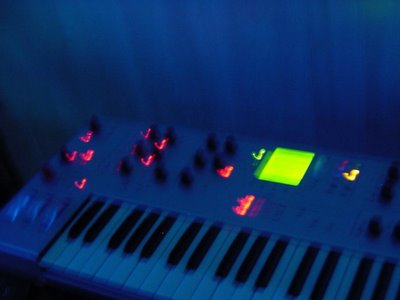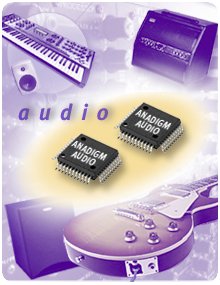Demos have moved
here.
Via Kenneth Elhardt on AH. Enjoy.
"In a recent catalog I recieved, I noticed that the Alesis Ion was now
selling for $600. I had a 10% coupon for 8th Street, so at $540 it was just
too good of a deal to pass up. I bought one at the end of october. 2 weeks
later I had created a bunch of sounds on it and then recorded the demos
below. Since I like the music of Ennio Morricone, I decided to use that as a
vehicle to demo some realistic accoustic imitations. I don't have any
printed music scores, so I did it by ear, improvised stuff, and threw
together elements from different movies just to create a eclectic mix.
The only equipment used was an Ion + expression pedal, + sustain pedal + EQ,
+ reverb. I also played the whole thing on that little tiny keyboard because
the Ion wouldn't work properly with my 88 note RD-1000 piano. That's just
one of the many limits, cut corners, disappointments, and just outright
unacceptable behaviors on this lowcost synth. However there are many great
things about it, and physical construction is surprising good. A list of
sounds modeled is listed after, plus some other short demos follow.
Note that I have only heard these on clear detailed headphones and have no
idea what it sounds like on crappy computer speakers or dull sounding
monitors. There is some background noise in places, especially the acoustic
guitar parts. Please try to ignore that. I've found that a second listen
through makes it less noticable."
(3:33) Running time.
http://home.att.net/~synth6/Alesis_Ion_Western.mp3
Instruments in order of when they make their first appearence.
01) Kettle Drum
02) Bass Drum
03) Tenor Recorder
04) Mellotron Choir (filters modified with envelope to make it say "Wah",
and NO, the lame and useless Ion vocal filters were not used)
05) Alto Recorder
06) Acoustic Guitar (nylon string rythm guitar)
07) Whistling
08) Telecaster Electric Guitar
09) Acoustic Guitar (brighter sound, somewhere between a nylon and steel
string rythm guitar)
10) Trumpet
11) Trombones
12) French Horn
13) Snare Drum
14) Mellotron Male/Female Choir (sacrificed vocal clarity for density of
sound)
-------------
(2:20) Here is an attempt to model Tomita's mellotron choir sounds. He seems
to have two types, a typical "aah" sound and also a murky and sometimes non
distinct one consisting of "ooh" sounds on some notes, humming on others,
and almost synthetic vocal throat sounds with no vowels on others. The first
Ravel part shows four subtle patch variations ranging from delicate vocal
sounds to forceful "aah" sounds. The second part is trying to sound like his
murky type, though it's still a work in progress. That's followed by a
typical Tomita effect.
http://home.att.net/~synth6/Ion_Tomitas_Mellotron.mp3
(1:11) You only need to listen to this if you want to hear two snippets from
the above demo inserted into a real Tomita recording. He does the "ooh" and
"hmm" parts, I do the "aah" parts.
http://home.att.net/~synth6/Ion_Real_Fake_Real_Fake.mp3
(0:18) Here is an Ion recorder modeled with such realism and detail in
timbre and breathy attack, that it is indistiguishable from the real thing.
It can play side-by-side or replace recordings of real instruments without
anybody having a clue. Assuming your wires aren't crossed, my recorder is
playing in the left channel and the real one is in the right. I'll do a full
recorder demo later.
http://home.att.net/~synth6/Ion_Recorder_Compare.mp3
(1:37) This is orchestral power brass. It provides rather realistic and huge
brass sounds ranging from ppp to fff. This demo shows the trombone range,
followed by the high trombone/trumpet range, then the tuba section, then
octave brass - sounding large with just 4 notes, then french horn, then G.S.
Patton.
http://home.att.net/~synth6/Ion_Brass.mp3

















